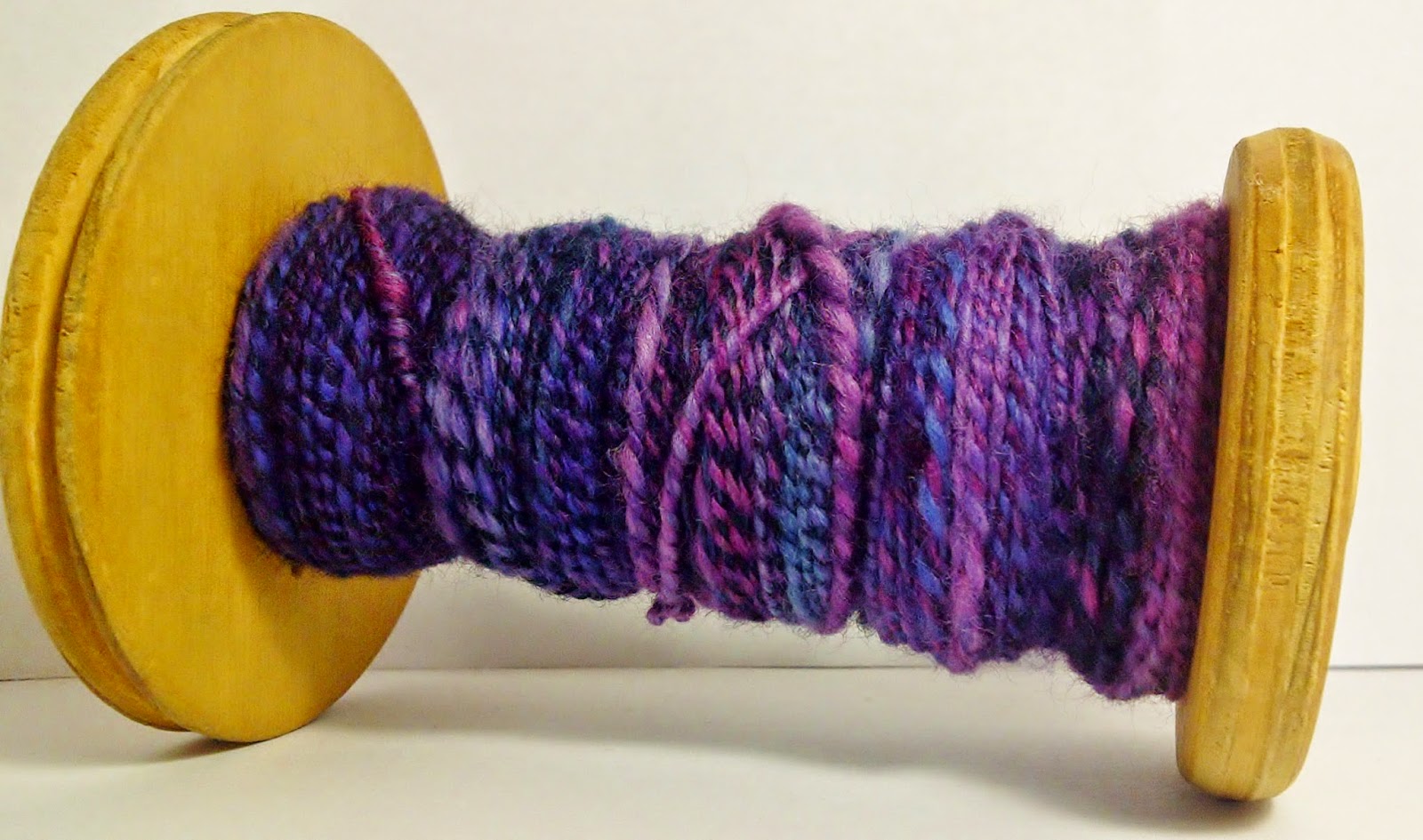To ply or not to
ply? This is a common question for many hand spinners when creating yarn.
Plying yarn, at the simplest level, is taking a minimum of 2 singles and
spinning them together to create a more durable, textured, and balanced yarn.
Many factors go into plying yarn, from the angles of the singles to the
spinning speed.
One of the
difficulties I had when plying was the tangling of the singles together. The
more affluent hand spinner can purchase a tool called a Lazy Kate, which
supports multiple bobbins and prevents tangling. The average price of a Lazy Kate ranges from $25.00 to $100.00. After examining the structure of
various Lazy Kates, I decided to try my
hand at making my own out of supplies found around my apartment.
 |
| I only have one spindle loaded in this picture. |
Supplies:
1 cardboard box
4 circular cardboard
cut outs
1 paper towel roll
Scrap cardboard
2 knitting needles
(or any dowel-like objects)
Hot glue gun
Step 1: Prepare all
cardboard pieces. Cut out 4 cardboard circles with a larger diameter than a
paper towel roll. Make circular holes in the center of each circle.
Step 2: Cut paper
towel roll in half.
Step 3: Cut out 4
cardboard rectangles with rectangular slits in the middle (they will need to be
wide enough for your knitting needles - I will refer to these pieces as
"cardboard windows").
Step 4: Glue a
cardboard circle to each end of the two halves of the paper towel roll. This
creates the bobbin.
Step 5: Glue the
cardboard windows onto the side of the box. Two windows on each of the longest
sides of the rectangular box. Make sure they are parallel.
Step 6: Place
knitting needle through the bobbin, then insert ends of the needle through the
2 parallel cardboard windows.
VOILA! You now have
a make-shift Lazy Kate for under $10.00.
Any questions? Send
an e-mail to northerndelightsfiberart@gmail.com or leave a comment below!













